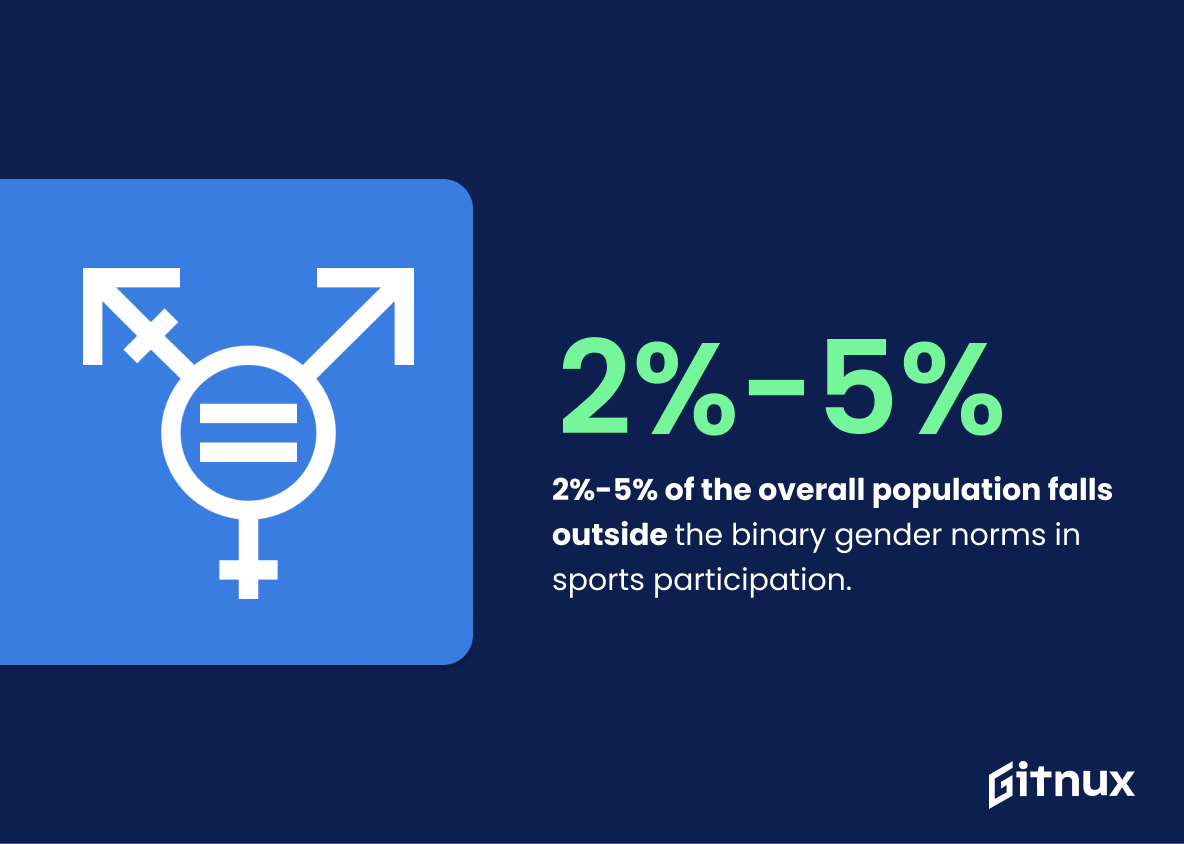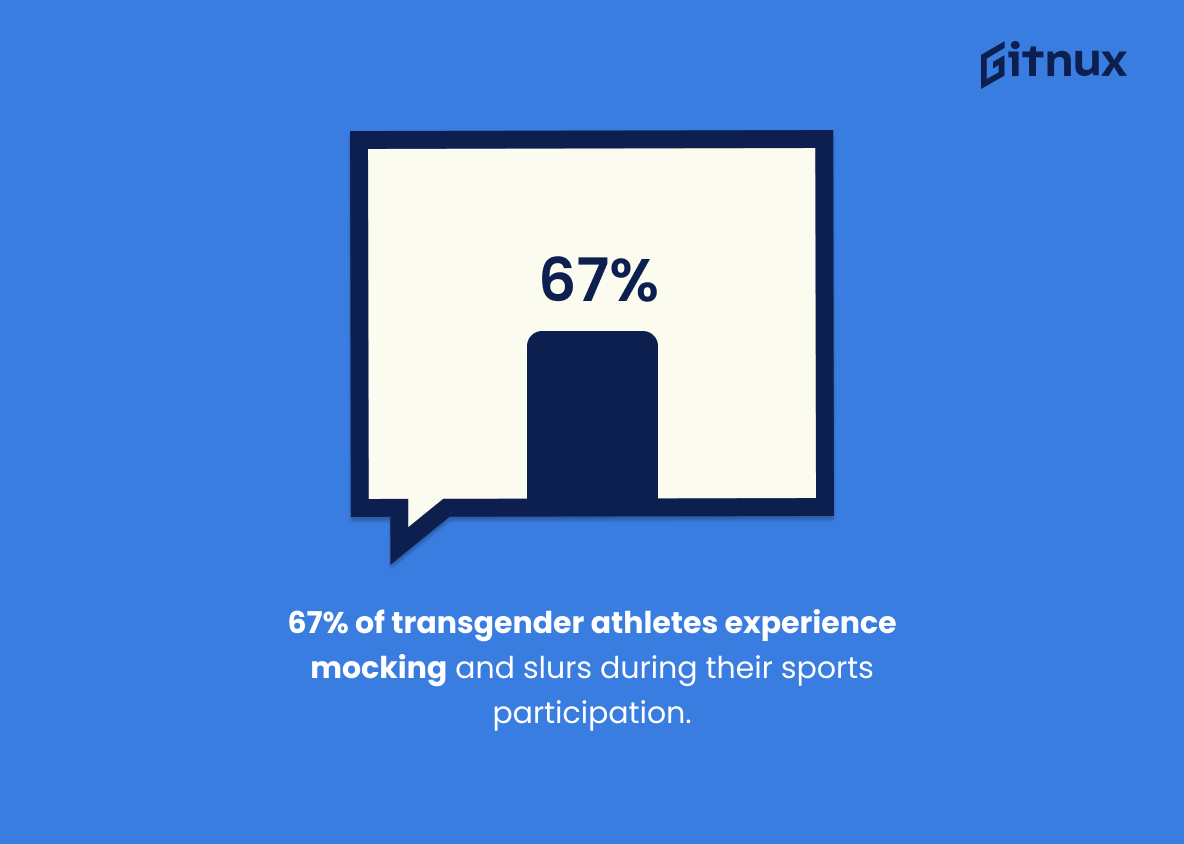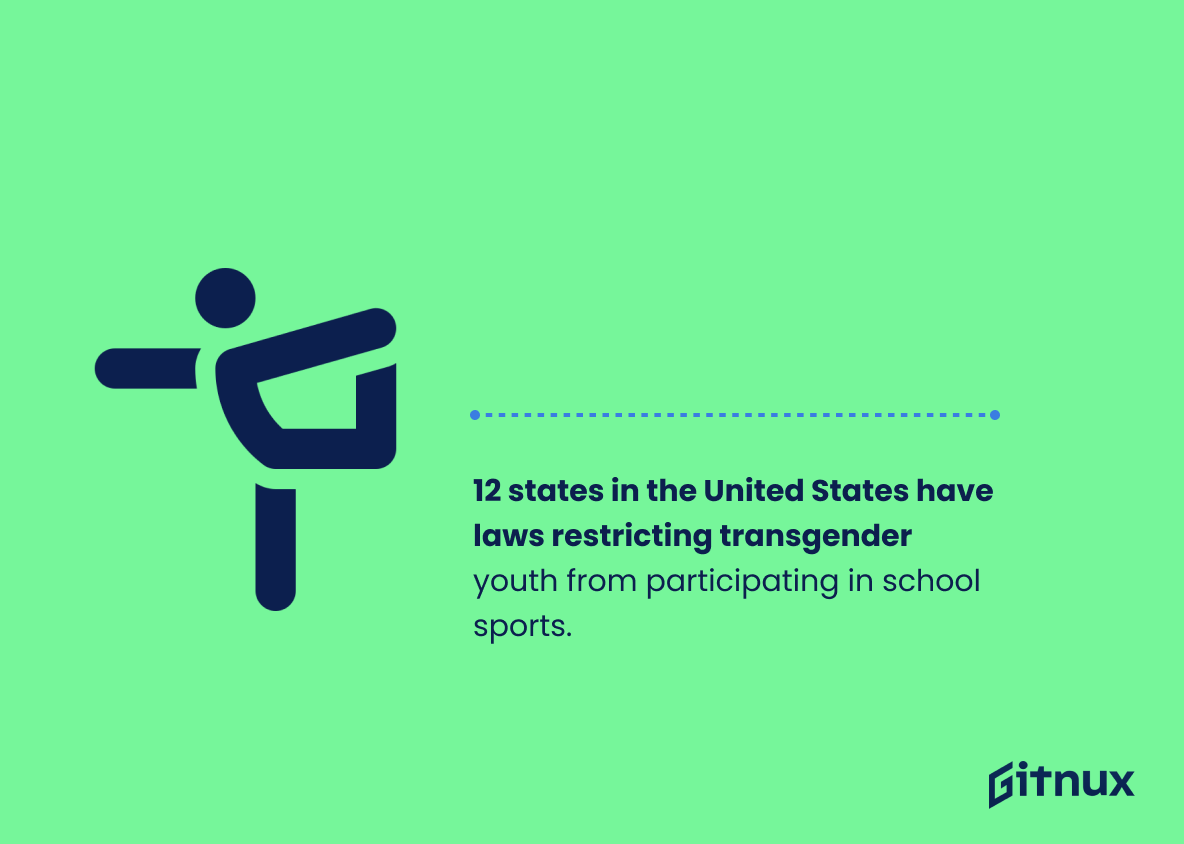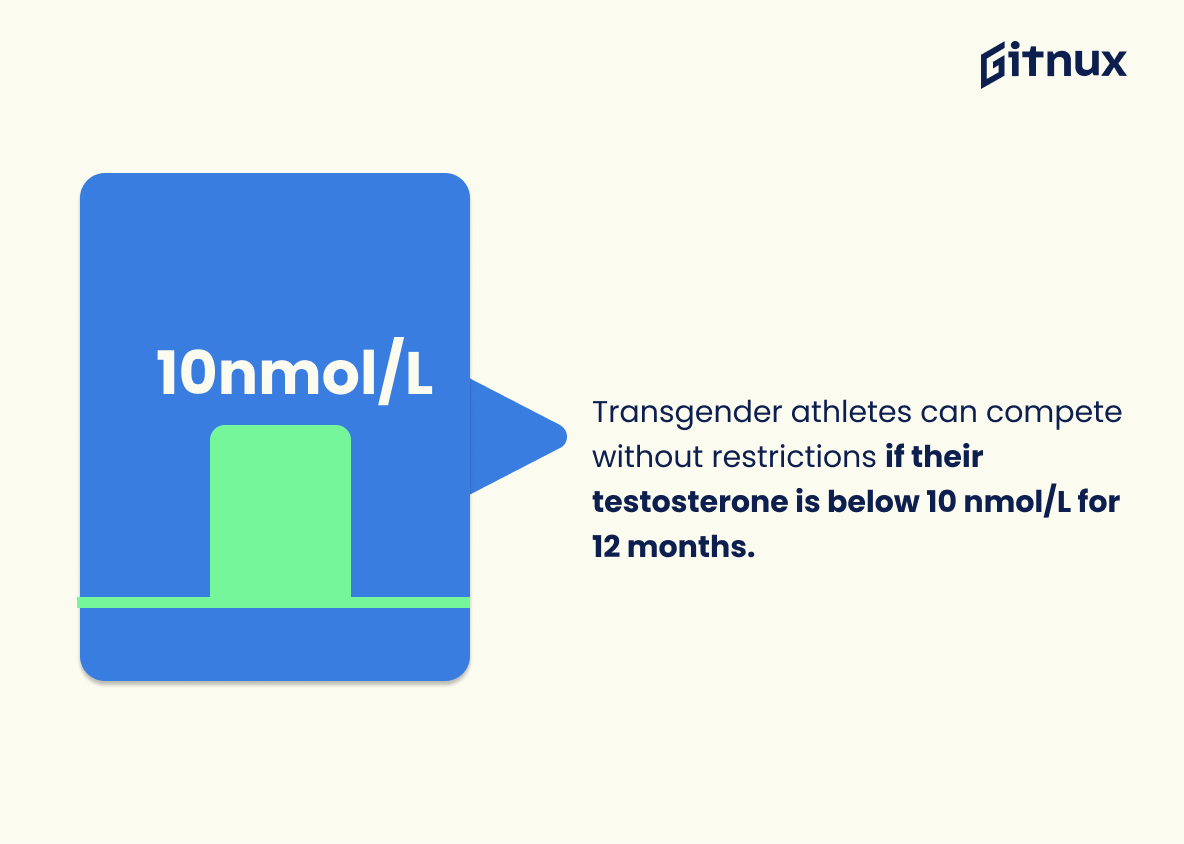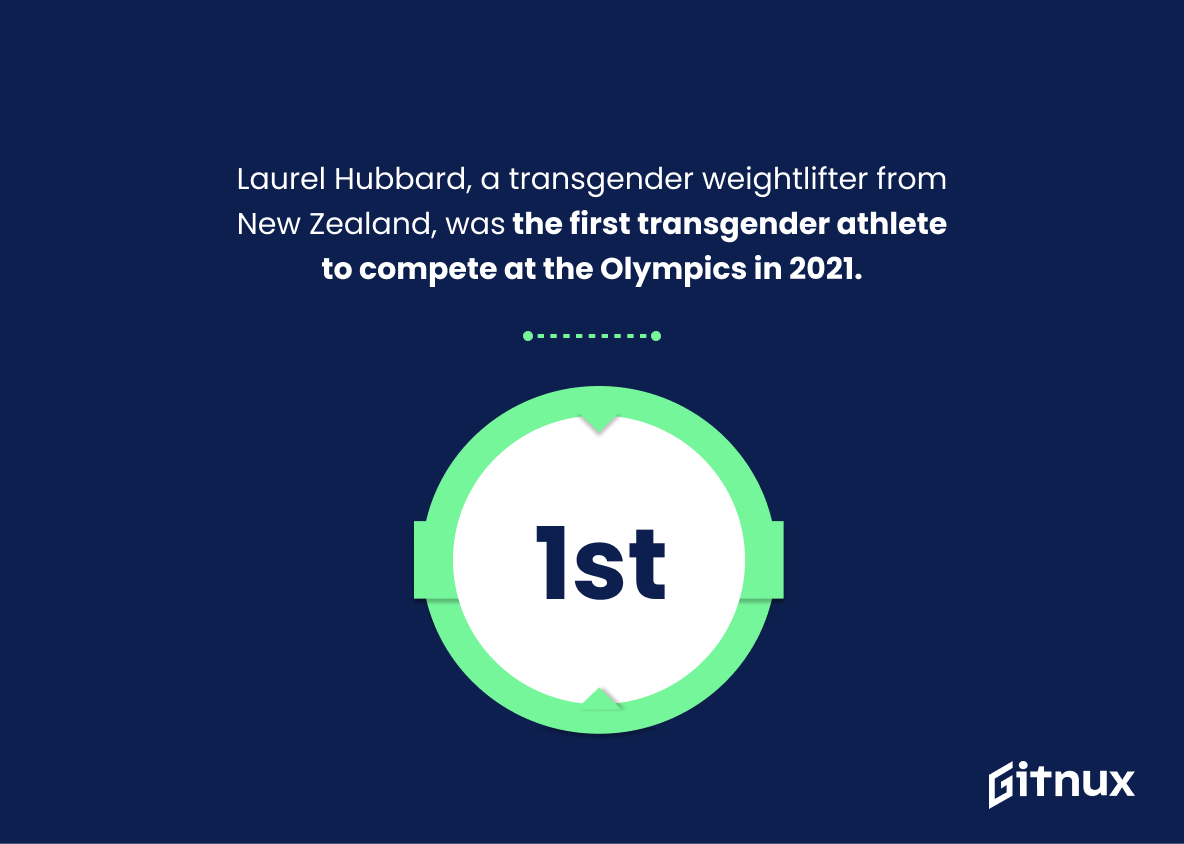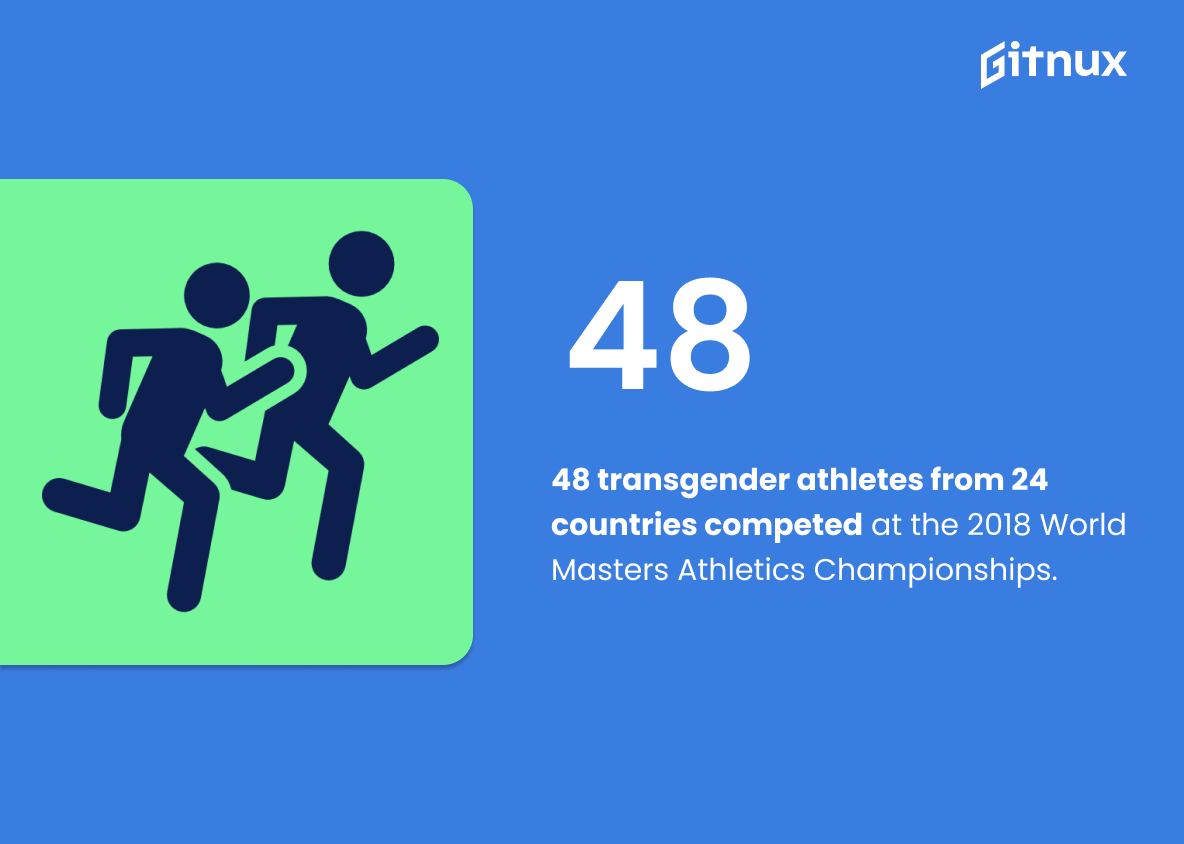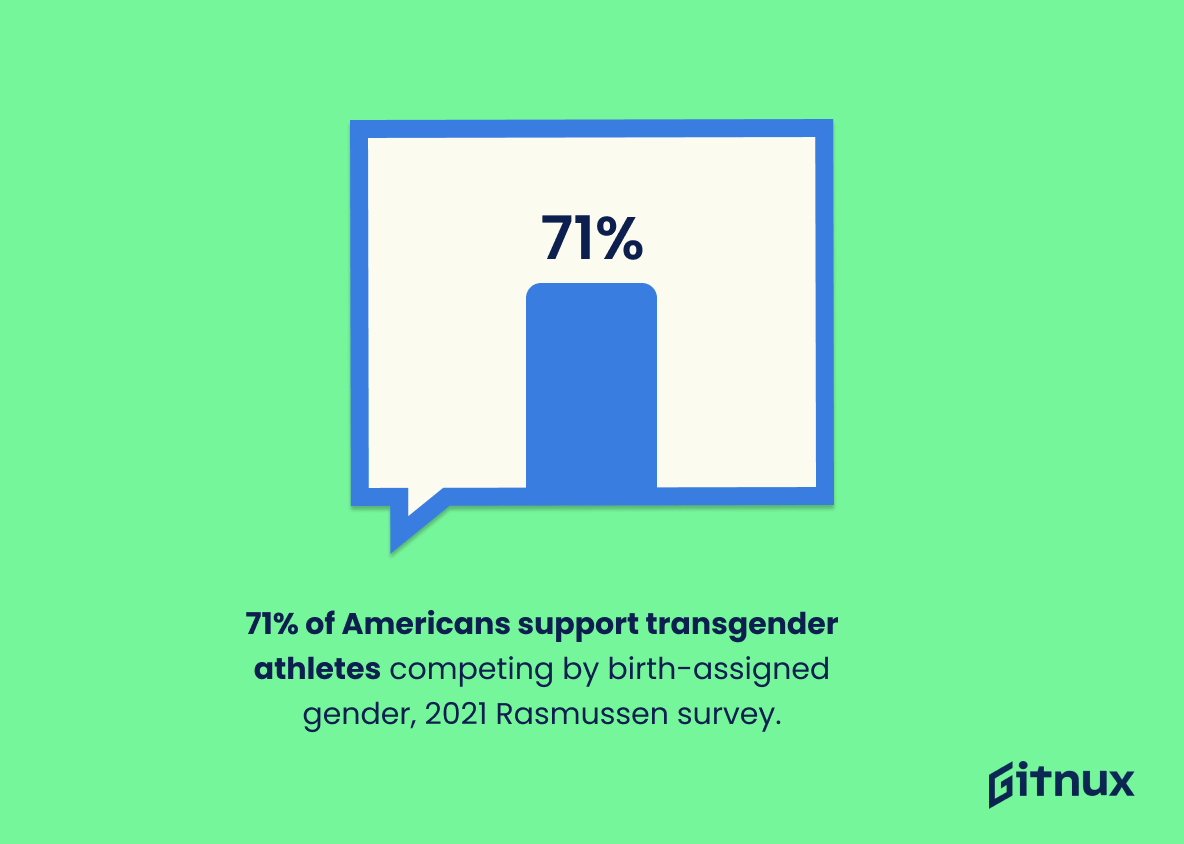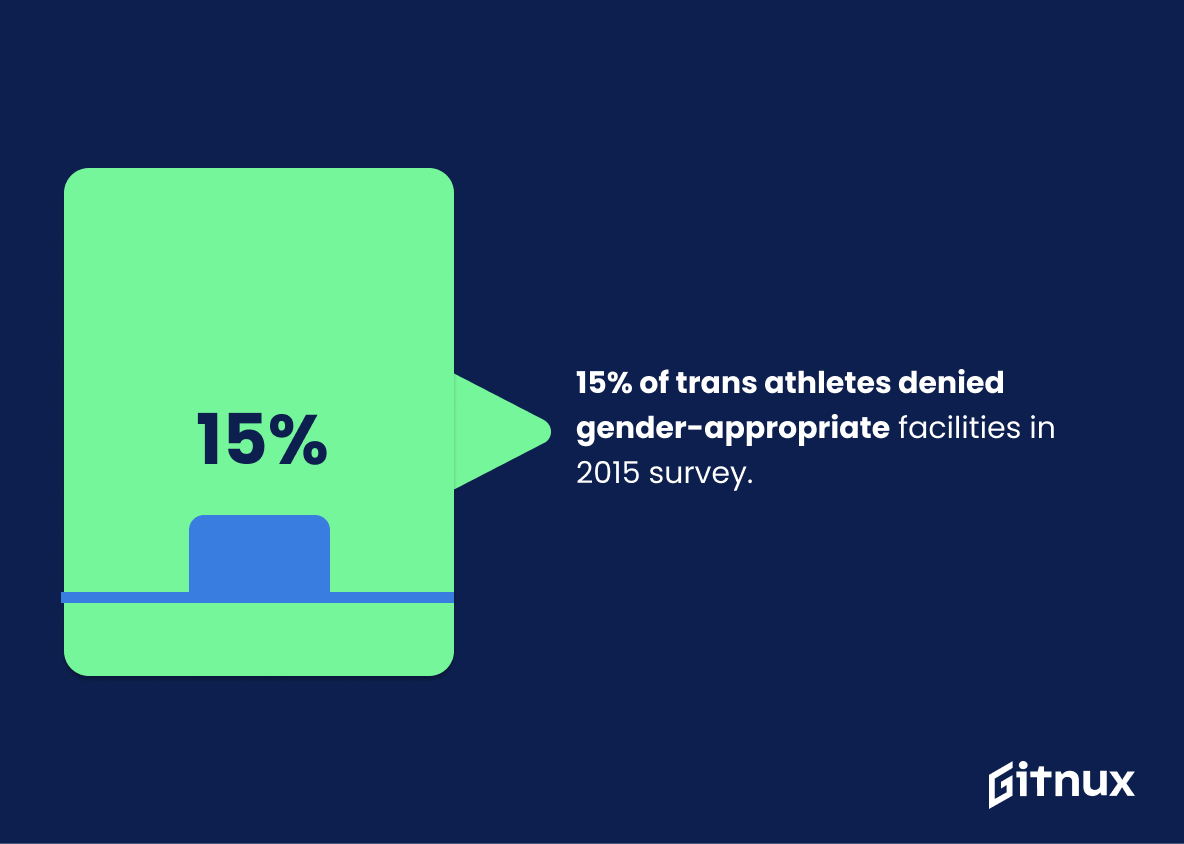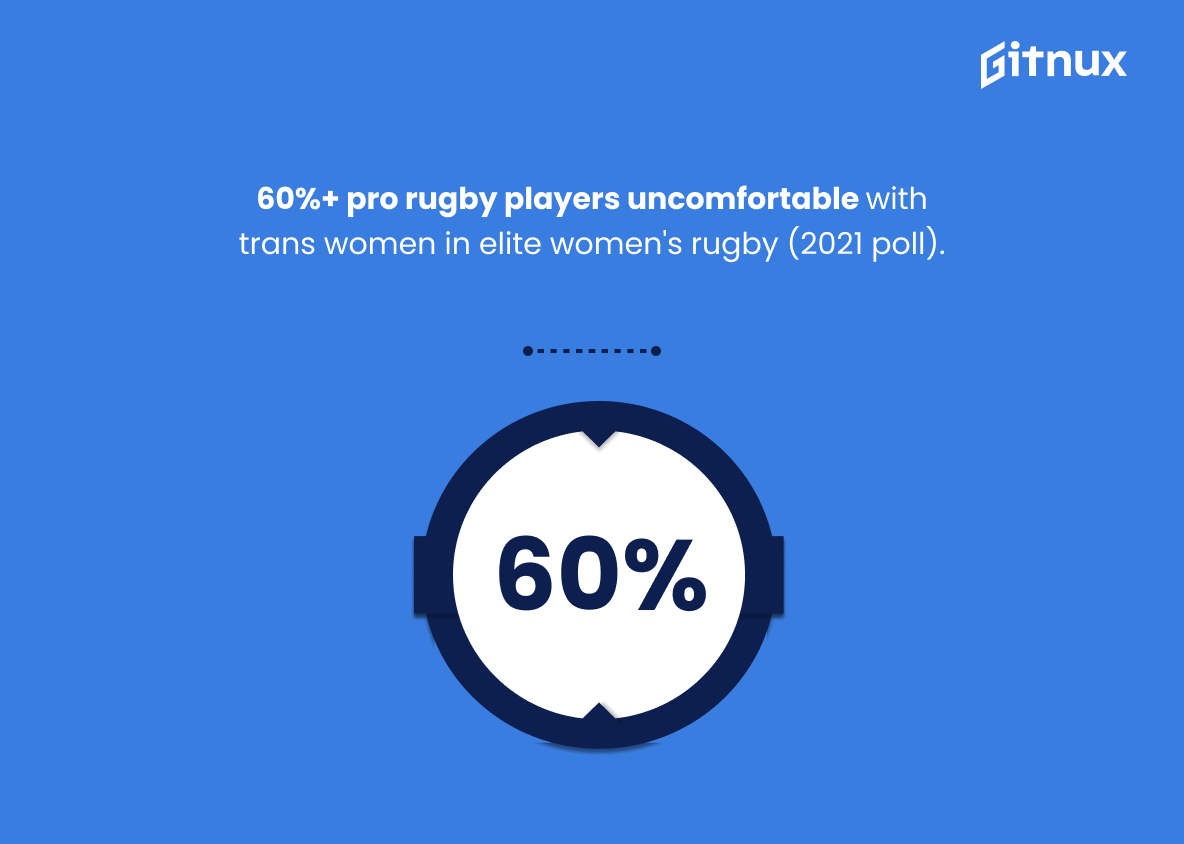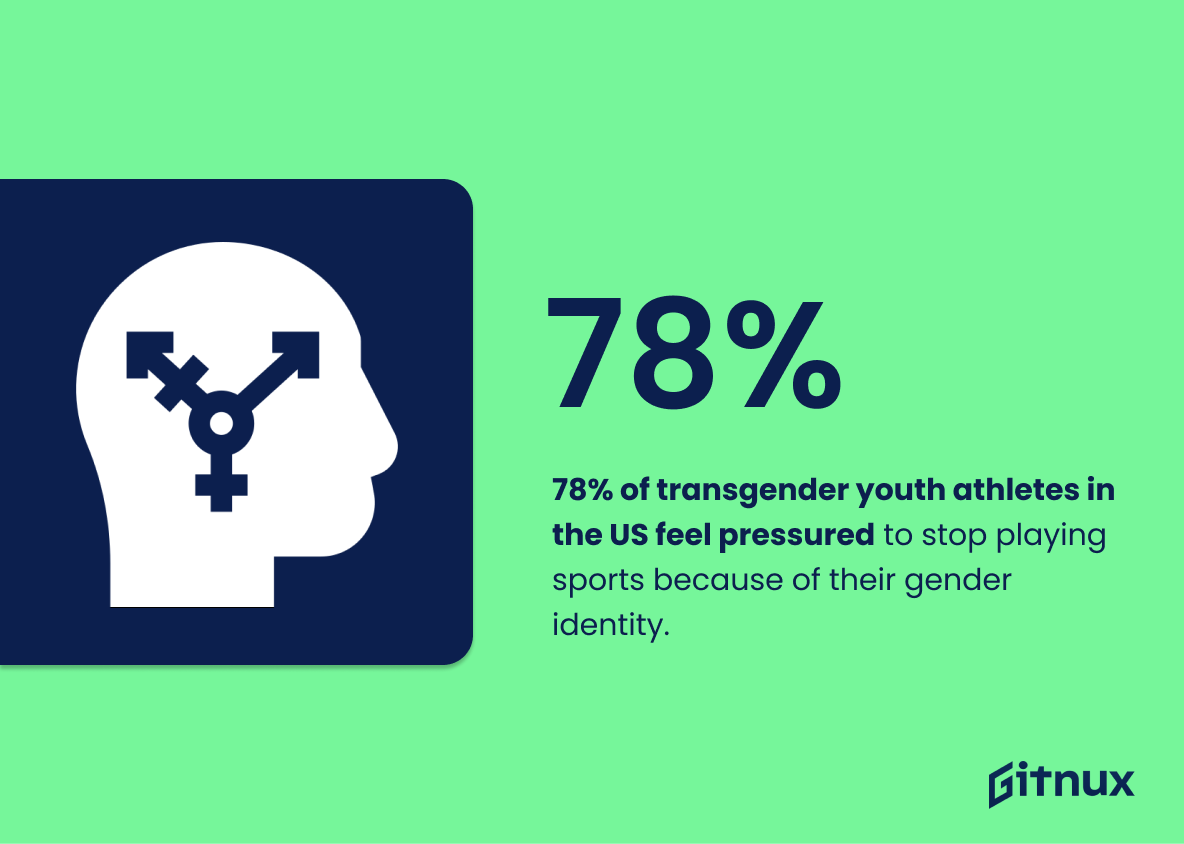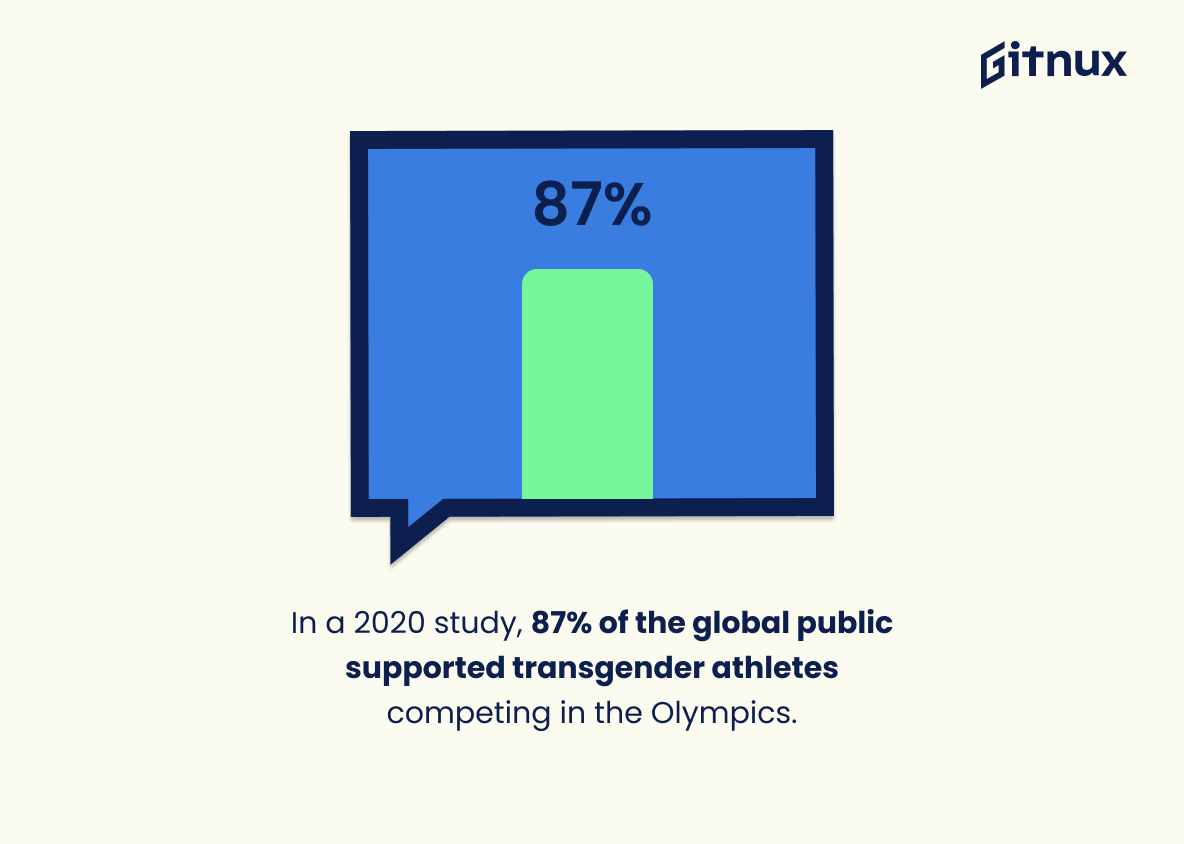The world of sports is constantly evolving, and the inclusion of transgender athletes has become an increasingly important topic in recent years. This blog post will explore some statistics related to transgender athletes from around the world, including their participation in major sporting events such as The Gay Games and the Olympics, as well as data on public opinion towards transathletes. We’ll also look at how laws and policies are impacting transgender athletes’ ability to participate in school sports or professional leagues. Finally, we’ll discuss mental health issues that many transathletes face due to discrimination they experience while playing sports.
Transgender Athletes Statistics Overview
2%-5% of the overall population falls outside the binary gender norms in sports participation.
This statistic is a powerful reminder that gender norms in sports participation are not a one-size-fits-all concept. It highlights the fact that a significant portion of the population does not fit neatly into the traditional binary gender categories, and that transgender athletes are far from an isolated phenomenon. This statistic serves as a reminder that transgender athletes are part of a larger community of individuals who are challenging traditional gender norms in sports participation.
67% of transgender athletes experience mocking and slurs during their sports participation.
This statistic is a stark reminder of the discrimination and prejudice that transgender athletes face in their sports participation. It highlights the need for greater acceptance and understanding of transgender athletes, and the importance of creating a safe and inclusive environment for them to participate in sports. It also serves as a call to action for sports organizations to take steps to ensure that transgender athletes are treated with respect and dignity.
12 states in the United States have laws restricting transgender youth from participating in school sports.
This statistic is a stark reminder of the discrimination that transgender youth face in the United States. It highlights the fact that, despite the progress made in recent years, there are still many states that are unwilling to accept transgender youth and allow them to participate in school sports. This statistic serves as a reminder that there is still much work to be done in order to ensure that transgender youth are treated with respect and dignity.
The IOC has recommended transgender athletes to compete without restrictions if their testosterone level is below 10 nmol/L for at least 12 months before competing.
This statistic is a game-changer for transgender athletes, as it provides a clear and fair guideline for them to compete in sports. It sets a standard for the level of testosterone that must be maintained in order to be eligible to compete, and gives transgender athletes the opportunity to compete on a level playing field with their peers. This statistic is a major step forward in the fight for transgender athletes’ rights and recognition.
Laurel Hubbard, a transgender weightlifter from New Zealand, was the first transgender athlete to compete at the Olympics in 2021.
This statistic is a milestone in the history of transgender athletes, demonstrating the progress that has been made in terms of acceptance and inclusion. It is a powerful reminder that transgender athletes can and do compete at the highest levels of sport, and that their presence is welcomed and celebrated. This statistic is a testament to the hard work and dedication of transgender athletes, and serves as an inspiration to those who may have felt excluded in the past.
48 transgender athletes from 24 countries competed at the 2018 World Masters Athletics Championships.
This statistic is a powerful testament to the progress that has been made in the acceptance of transgender athletes in the world of competitive sports. It shows that transgender athletes are increasingly being welcomed into the international sporting community, and that they are capable of competing at the highest levels. This statistic is a sign of hope for transgender athletes everywhere, and a reminder that everyone should be given the opportunity to pursue their dreams.
71% of Americans support allowing transgender people to compete only if based on their birth-assigned gender, as per a 2021 Rasmussen Reports survey.
This statistic is a powerful indicator of the current public opinion on transgender athletes competing in sports. It provides a valuable insight into the attitudes of the American public and can be used to inform the discussion around transgender athletes and their participation in sports. It can also be used to inform policy decisions and help shape the future of transgender athletes in sports.
A 2020 study found that transgender women who underwent hormone therapy maintained an advantage in muscle mass over cisgender women two years after transitioning.
This statistic is a powerful testament to the efficacy of hormone therapy for transgender women, demonstrating that even after two years of transitioning, transgender women can maintain an advantage in muscle mass over cisgender women. This is an important piece of information to consider when discussing the potential impact of transgender athletes on sports, as it suggests that hormone therapy can be an effective way to level the playing field between transgender and cisgender athletes.
15% of transgender athletes reported being denied access to a bathroom or locker room consistent with their gender identity in a 2015 survey.
This statistic is a stark reminder of the discrimination that transgender athletes face in their everyday lives. It highlights the need for greater acceptance and understanding of transgender athletes, and the importance of creating an environment where they can feel safe and respected. This statistic is a call to action for those in the sports community to take a stand against discrimination and create an inclusive environment for all athletes.
In professional rugby, over 60% of players in a 2021 poll indicated they wouldn’t be comfortable with transgender women competing in elite women’s rugby.
This statistic is a stark reminder of the challenges transgender women face when competing in elite women’s rugby. It highlights the need for greater acceptance and understanding of transgender athletes, and the importance of creating an inclusive environment for all players. It also serves as a reminder that there is still a long way to go in terms of creating a level playing field for transgender athletes in professional sports.
78% of transgender youth athletes in the US feel pressured to stop playing sports because of their gender identity.
This statistic is a stark reminder of the discrimination and pressure that transgender youth athletes in the US face when it comes to participating in sports. It highlights the need for greater acceptance and understanding of transgender athletes, and the importance of creating an inclusive environment for them to participate in sports without fear of judgement or exclusion.
In a 2020 study, 87% of the global public supported transgender athletes competing in the Olympics.
This statistic is a powerful testament to the widespread acceptance of transgender athletes competing in the Olympics. It shows that the majority of the global public is in favor of transgender athletes having the same rights and opportunities as any other athlete. This statistic is a strong indication that the world is becoming more inclusive and accepting of the transgender community, and that the Olympics should be a place where everyone can compete without fear of discrimination.
Conclusion
The statistics presented in this blog post demonstrate the prevalence of transgender athletes and gender diverse athletes around the world, as well as their experiences with discrimination. Despite some opposition to transathletes competing at elite levels, a majority of people support allowing them to participate without restrictions.
The data also shows that many states have laws restricting transgender youth from participating in school sports, which can lead to higher rates of anxiety and depression among these individuals. It is clear that more needs to be done in order for all athletes – regardless of gender identity or expression – to feel safe and accepted while playing sports.
References
0. – https://www.hrc.org
1. – https://www.justthenews.com
2. – https://www.olympicchannel.com
3. – https://www.edition.cnn.com
4. – https://www.ncbi.nlm.nih.gov
5. – https://www.theguardian.com
6. – https://www.hrc.org
7. – https://www.sports.vice.com
8. – https://www.irishtimes.com
9. – https://www.outsports.com
10. – https://www.bjsm.bmj.com
11. – https://www.reuters.com
